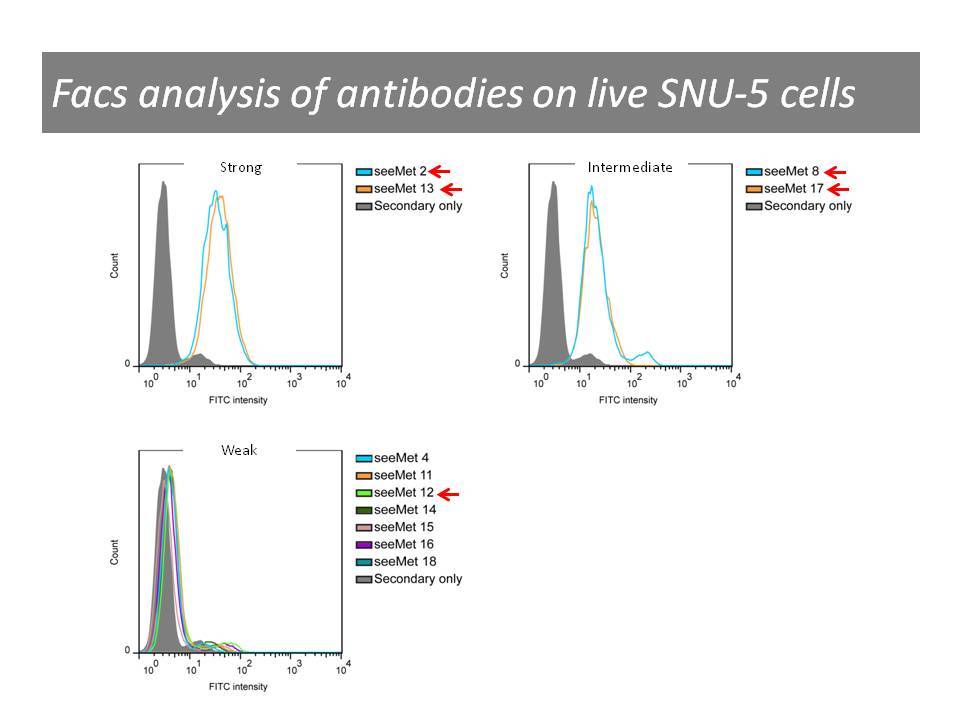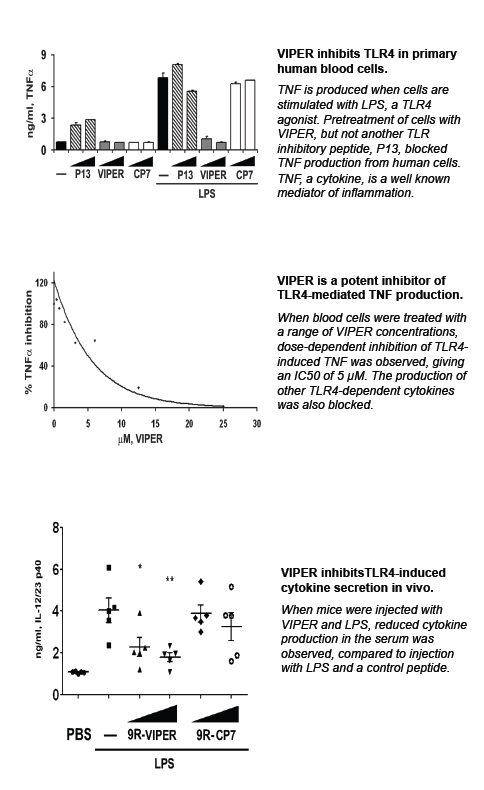Cat. #152665
Anti-c-Met [17]
Cat. #: 152665
Sub-type: Primary antibody
Unit size: 100 ug
Availability: 1-2 weeks
Target: c-Met, cMet
Class: Monoclonal
Application: FACS ; IF ; IP ; WB
Reactivity: Human
Host: Mouse
£300.00
This fee is applicable only for non-profit organisations. If you are a for-profit organisation or a researcher working on commercially-sponsored academic research, you will need to contact our licensing team for a commercial use license.
Contributor
Inventor: Julin Wong ; David Lane
Institute: A*STAR Accelerate Technologies Pte Ltd
Tool Details
*FOR RESEARCH USE ONLY (for other uses, please contact the licensing team)
- Name: Anti-c-Met [17]
- Research fields: Cancer;Cell signaling and signal transduction;Genetics
- Clone: 17
- Tool sub type: Primary antibody
- Class: Monoclonal
- Conjugation: Unconjugated
- Reactivity: Human
- Host: Mouse
- Application: FACS ; IF ; IP ; WB
- Description: c-Met is a tyrosine receptor kinase which is activated by its ligand, the hepatocyte growth factor. Activation of c-Met leads to a wide spectrum of biological activities such as motility, angiogenesis, morphogenesis, cell survival and cell regeneration. c-Met is abnormally activated in many tumour types. Aberrant c-Met activation was found to induce tumour development, tumour cell migration and invasion, and the worst and final step in cancer progression, metastasis.
- Immunogen: Bacterially expressed human c-Met alpha chain
- Isotype: IgG1 kappa
- Myeloma used: Sp2/0-Ag14
- Recommended controls: SNU-5, U-87MG and MKN45 cells (negative control: T47D cells)
Target Details
- Target: c-Met, cMet
- Tissue cell line specificity: SNU-5, U-87MG and MKN45 cells (negative control: T47D cells)
- Target background: c-Met is a tyrosine receptor kinase which is activated by its ligand, the hepatocyte growth factor. Activation of c-Met leads to a wide spectrum of biological activities such as motility, angiogenesis, morphogenesis, cell survival and cell regeneration. c-Met is abnormally activated in many tumour types. Aberrant c-Met activation was found to induce tumour development, tumour cell migration and invasion, and the worst and final step in cancer progression, metastasis.
Applications
- Application: FACS ; IF ; IP ; WB
Handling
- Format: Liquid
- Concentration: 1 mg/ml
- Unit size: 100 ug
- Storage buffer: PBS with 0.02% azide
- Storage conditions: -15° C to -25° C
- Shipping conditions: Shipping at 4° C
Related Tools
- Related tools: Anti-c-Met 12.1 ; Anti-c-Met 13 ; Anti-c-Met 8
References
- Wong et al. 2013. Oncotarget. 4(7):1019-36. PMID: 23859937.
- Anti-c-Met antibodies recognising a temperature sensitive epitope, inhibit cell growth.




